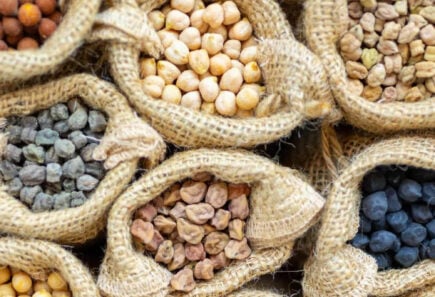
Cultivated meat
This is your guide to cultivated meat. Explore our tools, resources, and expert analysis of the cultivated meat industry.
What is cultivated meat?
Cultivated meat is meat produced directly from cells. The process of cultivating meat uses the basic elements needed to build muscle and fat and enables the same biological process that happens inside an animal. Cultivated meat is identical to conventional meat at the cellular level.
Where does cultivated meat fit in the alt protein landscape?
Compared to the other pillars of alternative protein production – plant-based and fermentation – cultivated meat is a more recent innovation.
However, the idea of cultivating meat without the animal has a long history. In 1931, Winston Churchill predicted, “We shall escape the absurdity of growing a whole chicken in order to eat the breast or wing, by growing these parts separately under a suitable medium.”
Professor Mark Post and his team at Maastricht University debuted the first cultivated burger in August 2013. In 2016, the first cultivated meat company, UPSIDE Foods, launched publicly. Mosa Meat and Super Meat soon followed. JUST Foods sold the first cultivated meat product in 2020, debuting chicken nuggets at a restaurant in Singapore.
Why is cultivated meat important?
Using animals to convert plants to meat is incredibly inefficient. According to the World Resources Institute, it takes nine calories of food fed to a chicken to get one calorie back out in the form of animal flesh, and chickens are the most efficient at converting crops to meat. Livestock provides just 18 percent of calories consumed by humans but takes up 77 percent of global farmland.
Growing meat directly is vastly more efficient. For example, studies indicate that cultivated meat would use land 60 to 300 percent more efficiently than poultry and 2000 to 4000 percent more efficiently than beef. This greater efficiency would benefit everything from biodiversity to climate. Cultivating meat also avoids the risk of fecal contamination and does not require many animals to live in close confinement. This, in turn, will drastically reduce the need for antibiotics in meat production as well as the risk of zoonotic pandemics.
What needs to be done to advance cultivated meat?
Although there are dozens of cultivated meat companies around the world, none have yet reached commercial-level production in terms of scale or cost. From cell line development to bioprocessor design, there are a number of challenges to meet before cultivated meat is widely available and cost-competitive.
This is why the Good Food Institute created our Competitive Research Grants Program – to drive cutting-edge open-access research around the world. It is also why we are calling for governments to shift some of their billions of agricultural research funds to cultivated meat and other alternative proteins.
There are also a variety of regulatory steps required for cultivated meat to be available to most people. Singapore was the first country to formalize their regulatory requirements and approve a cultivated meat product for sale. Many other countries are working on developing their own standards.
Around the world, GFI is working with government agencies to craft clear regulatory oversight of cultivated meat that puts food safety first. For example, GFI consulted with Singapore’s government leading up to their approval and the first commercial cultivated meat sale. GFI in the U.S. and around the world is working to ensure cultivated meat companies can compete on a level playing field with full public trust.
Cultivated meat nomenclature
We recommend “cultivated meat” continue to be used as the central industry term for meat produced via animal cell culture.

New research supports the term “cultivated meat”
New research conducted in December 2022 validates the use of “cultivated meat” over “cell-cultured meat” and other terms. Learn more in our fact sheet.

Cultivated meat: A growing nomenclature consensus
GFI Founder and CEO Bruce Friedrich explores the increased sector alignment around the preferred category name for meat produced through cellular agriculture.

Meat cultivation: Embracing the science of nature
We developed a set of science-forward, evidence-based communication tools, rooted in familiar language, to help explain meat cultivation to non-technical audiences.

Why GFI uses the term “cultivated meat”
It is possible to be science-forward and transparent while staying rooted in familiar concepts and appealing language. Mattson worked pro bono with GFI over the past nine months to explore,…
The cultivated meat industry
Since UPSIDE Foods was announced as the world’s first cultivated meat company on February 1, 2016, the industry has grown tremendously. There are now dozens of cultivated meat companies around the world, with hundreds of millions of dollars raised in early funding rounds. There are now business-to-business companies specializing in serving cultivated meat producers.

Resource
State of the Industry Report: Cultivated meat
This report details the commercial landscape, investments, regulatory developments, and scientific progress in the cultivated meat and seafood industry.

Resource
Cultivated meat industry summary
Our fact sheet provides a mid-year update on the current cultivated meat commercial landscape, investments, technical progress, and policy updates.

Discover cultivated meat research projects
Due to the gap in foundational research for alternative protein science, we work with a select group of generous donors to run a grant program for open-access research.

Myosatellite lines from Atlantic salmon
Through the GFI grant program, the Kaplan lab is developing myosatellite lines for cultivated Atlantic salmon at Tufts University

Optimizing media for chicken cells
Learn about Dr. David Block’s work to perfect growth media for cultivated chicken at University of California, Davis.

Co-culturing cells
GFI grantee Dr. Mariana Petronela Hanga is researching culturing different cell types at the same time.

Computational modeling
GFI grantee Dr. Simon Kahan at the Cultivated Meat Modeling Consortium is using computational modeling to improve bioreactor design for meat cultivation.

Page
The science of cultivated meat
Learn about the science of cultivated meat and the challenges that must be addressed for commercial production.
Getting governmental approval
Before cultivated meat comes to market in a country, a regulatory pathway must be in place. In many places, cultivated meat will be approved product by product. In Europe, cultivated meat will be regulated under an existing regulatory framework, although no company has yet submitted a product for approval. The government of Singapore formalized their regulatory process in 2020. The U.S., Israel, and Japan are also interested in cultivated meat and likely to present regulatory breakthroughs soon. India and Brazil are monitoring global progress with an eye to creating a path to market as well.

Page
Ensuring a clear path to market
Cultivated meat must have an efficient regulatory path to market to be successful. Learn how GFI advocates clear and efficient regulations.
Making the case
GFI contributes to the regulatory process through expert comments and litigation. Through letters to the FDA and state legislators and governors as well as through participation in lawsuits, GFI helps level the playing field for cultivated meat.

Page
Environmental benefits of alt proteins
How eco-friendly are plant-based and cultivated meats? Explore their climate impacts and resource requirements relative to conventional meat.

Page
Cultivated meat media kit
Cultivated meat can transform our global food system. Get the latest updates on this game-changing alternative to conventionally produced meat.
Expert perspectives
The cultivated meat field moves fast. GFI keeps readers up-to-date through regular posts from our experts around the world.

Our top 23 of 2023
Our global community grew alternative protein progress from the ground up this year. Check out the top highlights.

The top climate moments of this year and what they mean for alternative proteins
Our food system and climate are inextricably linked. The climate community is starting to take notice, zeroing in on protein.

Inviting everyone to the table
Giving Green, Charity Navigator, ACE, and Founders Pledge recognize GFI’s impact as a field catalyst and convener

Plant protein for a regenerative food system
The vital connection between legumes and soil health in our food system.

Support our work
Our research and insights are made possible thanks to our generous, global family of donors. Philanthropic support is vital to our mission. Connect with us today to discuss how you can help fuel this transformative work.
Header photo courtesy of JUST

To USDA in response to their Advanced Notice of Proposed Rulemaking on cultivated meat labeling
To the Office of Science and Technology Policy on creating an interagency research initiative on alternative proteins
Multi-member letter to Chair David Scott calling for alternative protein research funding in the reconciliation bill